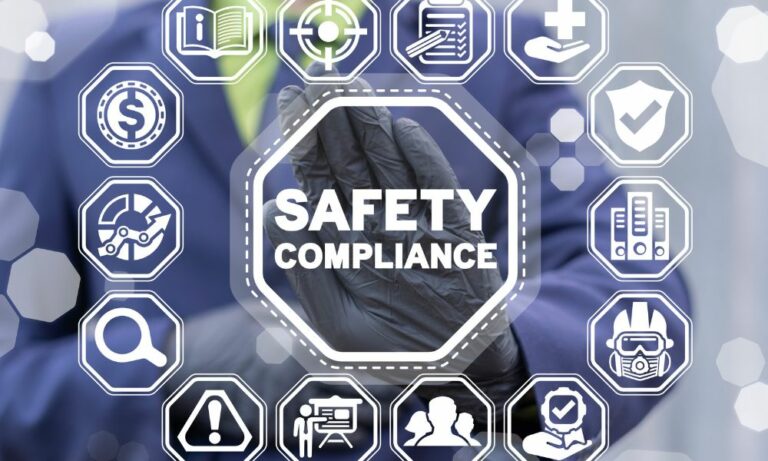When it comes to road safety, adhering to Department of Transportation (DoT) safety regulations is a legal obligation and a moral imperative. Understanding and implementing DoT compliance safety regulations can mean the difference between smooth operations and hefty fines or, worse, accidents and loss of life.
This comprehensive guide will walk you through everything you need to know about these rules, why they’re crucial, and how to integrate them into your business operations.
Introduction to DoT Compliance: What It Means for Businesses
DoT compliance refers to the adherence to a set of regulations set forth by the U.S. Department of Transportation aimed at ensuring the safety of commercial motor vehicles (CMVs) and their drivers. These regulations cover various aspects of road safety, including vehicle maintenance, driver qualifications, and hours of service. Compliance is mandatory for businesses that operate CMVs in interstate commerce and is a critical component for maintaining operational legitimacy and safety.
For businesses involved in transportation or logistics or any industry reliant on CMVs, understanding compliance systems management is essential. Not only does it prevent legal penalties, but it also promotes a culture of safety within the organization.

The Importance of DoT Compliance in Ensuring Road Safety
Road safety is paramount, and DoT compliance plays a vital role in reducing the risk of accidents, injuries, and fatalities. DoT compliance ensures that CMVs are well-maintained, drivers are qualified and well-rested, and that all safety protocols are followed diligently.
The Dangers of Noncompliance
Noncompliance can lead to severe consequences, including hefty fines, suspension of operations, and legal liabilities. More importantly, it can jeopardize the safety of drivers, passengers, and other road users. Therefore, businesses must prioritize DoT compliance to maintain high safety standards and protect lives.
Other Benefits
Apart from safety, DoT compliance also contributes to the overall efficiency of business operations. Well-maintained vehicles experience fewer breakdowns, and qualified drivers are less likely to be involved in accidents. This translates to reduced downtime, lower repair costs, and improved productivity.
A Breakdown of Key DoT Compliance Safety Regulations
DoT compliance encompasses a wide range of safety regulations designed to cover every aspect of CMV operation. Here are some of the key rules that businesses must adhere to:
Vehicle Maintenance and Inspections
Proper vehicle maintenance and regular inspections are crucial for ensuring the roadworthiness of CMVs. The DoT mandates pre-trip, en-route, and post-trip inspections to identify and address mechanical issues promptly. Failure to comply with these inspection requirements can result in fines and penalties.
Driver Qualifications and Training
Drivers must meet specific qualifications and undergo comprehensive training to ensure they’re fit for the job. This includes obtaining a Commercial Driver’s License (CDL), undergoing medical examinations, and completing mandatory training programs. Employers must maintain accurate records of driver qualifications and training to demonstrate compliance.
Hours of Service (HoS) Regulations
HoS regulations are designed to prevent driver fatigue, which is a leading cause of accidents involving CMVs. These regulations manage the number of hours a driver can be on duty and mandate rest periods. Electronic logging devices (ELDs) are used to track and record drivers’ hours of service accurately.
Hazardous Materials (Hazmat) Regulations
Compliance with hazmat regulations is critical for businesses involved in transporting hazardous materials. These regulations govern the packaging, labeling, handling, and transportation of hazardous materials to prevent accidents and ensure public safety.
How DoT Compliance Affects Different Industries
DoT compliance is not limited to the transportation industry alone. It has far-reaching implications across various sectors that rely on CMVs for their operations. Let’s explore how DoT compliance impacts different sectors:
Logistics and Freight
In the logistics and freight industry, DoT compliance ensures the safe and efficient movement of goods. Properly maintained vehicles and qualified drivers are crucial for meeting delivery schedules and minimizing disruptions.
Construction and Engineering
Construction and engineering companies often use CMVs to transport heavy equipment and materials to job sites. Adhering to DoT compliance ensures that these vehicles are safe and reliable, reducing the risk of accidents and project delays.
Oil and Gas
The oil and gas industry relies heavily on CMVs to transport equipment, supplies, and personnel to remote locations. Compliance with DOT regulations maintains the safety and integrity of these operations, especially when dealing with hazardous materials.
Public Transportation
Public transportation agencies must adhere to DoT compliance to ensure the safety of passengers and drivers. This includes regular maintenance of buses and other vehicles, as well as driver training and qualifications.

Strategies for Ensuring DoT Compliance Within Your Organization
Ensuring DoT compliance requires a proactive approach and a commitment to safety. Here are some strategies to help your organization stay compliant:
Implement Comprehensive Training Programs
Invest in ongoing training programs for drivers and other personnel involved in CMV operations. This includes educating employees about DoT regulations, safe driving practices, and proper vehicle maintenance procedures. Regular training reinforces the importance of compliance and keeps employees updated on regulatory changes.
Conduct Regular Audits and Inspections
Perform regular audits and inspections to identify compliance gaps and address them promptly. This includes checking vehicle maintenance records, driver qualifications, and HoS logs. Internal audits ensure that your organization remains compliant and can withstand external inspections.
Leverage Technology Solutions
Utilize technology solutions such as ELDs and fleet management software to streamline compliance processes. These tools can automate record-keeping, track hours of service, and provide real-time data on vehicle performance and maintenance needs. Technology can significantly reduce the administrative burden of compliance and enhance overall efficiency.
The Role of Technology in Simplifying DoT Compliance
Technology plays a crucial role in simplifying and enhancing DoT compliance. With the advent of advanced tools and software, businesses can streamline compliance processes and ensure accuracy. Here are some ways technology can help:
Electronic Logging Devices
ELDs are essential pieces of equipment for keeping track of a driver’s hours of service. They provide accurate and tamper-proof records, making it easier for businesses to comply with HoS regulations. ELDs also eliminate the need for manual logbooks, reducing the risk of errors and falsification.
Fleet Management Software
Fleet management software offers a comprehensive solution for managing all aspects of CMV operations. It includes features such as vehicle tracking, maintenance scheduling, and compliance reporting. By centralizing data and automating tasks, fleet management software simplifies compliance and improves operational efficiency.
Telematics
Telematics technology enables real-time monitoring of vehicle performance and driver behavior. It provides valuable insights into fuel consumption, speed, braking patterns, and more. By leveraging telematics, businesses can proactively address issues, improve safety, and ensure DoT compliance.
Building a Culture of Safety and Responsibility
Understanding the complexities of DoT compliance safety regulations may seem daunting, but it is essential for ensuring your organization’s operations can continue without disruption. By implementing the best practices outlined in this guide, businesses can stay compliant and protect the well-being of their drivers, passengers, and the public.
Remember, DoT compliance is about creating a culture of safety and responsibility. As you move forward, keep these insights and strategies in mind so your organization remains on the path toward success.






